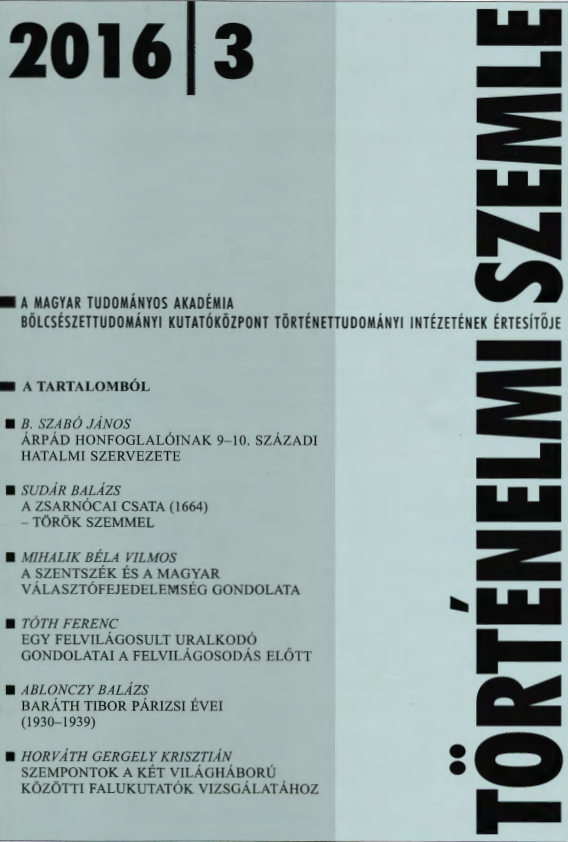Árpád honfoglalóinak 9–10. századi hatalmi szervezete steppetörténeti párhuzamok tükrében
The Structure of Power of the Hungarians in the 9th and 10th Centuries in the Mirror of Historical Analogies from the Steppe
Author(s): János B. SzabóSubject(s): Military history, Political history, Studies in violence and power, 6th to 12th Centuries, The Ottoman Empire
Published by: Magyar Tudományos Akadémia Bölcsészettudományi Kutatóközpont Történettudományi Intézet
Keywords: Hungary; power; 9th and 10th centuries; Crimea; khan;
Summary/Abstract: For an understanding of certain features of early Hungarian history the well-documented history of the Crimean Khanate seems to offer a useful analogy. The respective environments of the Crimean Tatars and the conquering Hungarians are comparable from several regards, and such a comparison makes it possible to interpret the little evidence we have about the military and political conditions in the period of the Hungarian conquest and subsequent foreign campaigns in the light of what is known about the relationship between the foreign military and diplomatic activities of the Crimean Khanate and its interior structures – thus detaching ourselves from the generally futile terminological debates. The period between the fall of the Uyghur Empire and the rise of the Mongol power, a period of steppe history dominated by the dispersal of „sovereignty”, separatism instead of universalism, and the growth in force of local interest groups, offers several interesting parallels with the phenomena that could be observed after the collapse of the Mongol imperial structures of the Ghengisids. As far as we know, the kindreds led by the so-called karachi beys constituted one of the foundations of the Crimean Khanate right from its establishment. Officially, it was the four karachi beys that chose from among the members of the ruling dynasty the new khan; his election and institution was followed by mutual oath-taking, in the manner of the treaty of blood in the history of Anonymous. Moreover, according to the DAI, at the election of the first ruler, the „first voevode” called Levedi even enjoyed a right of proposal similar to that of the bas karachi. Although the Crimean Tatars obviously constituted a „people under one authority”, the ruler could nevertheless only decide in important issues of foreign policy after taking counsel with the karachi beys – as the archontes of the „Turks” also decided in council about the proposed cooperation against the Pechenegs brought to them by the Byzantine cleric Gabriel. Nor was the relationship maintained with foreign powers a monopoly of the khan – a situation that is also hinted at in the case of the „Turks” both by the address of a Byzantine imperial letter „to the archontes of the Turks” and by Byzantine political practice. Although the karachi status was always held by four or five kindreds in the Crimea, these were not always the same. When one of them became weaker for some reason, it fell back in prestige as well, and could thus be excluded from the ranks of the privileged karachi kindreds for quite some time. It is probable that the power relations of the conquering Hungarians constituted a similarly fluid and open structure, in which change played as important a role as stability.
Journal: Történelmi Szemle
- Issue Year: 2016
- Issue No: 03
- Page Range: 355-381
- Page Count: 27
- Language: Hungarian

